Carry traders borrow a currency with a low interest rate and invest it in higher-yielding markets (e.g., bonds, gold, stocks, etc.).
This strategy primarily applies to low-interest-rate currencies (e.g., the Swiss franc and yen). Additionally, the capital flows of carry traders vary depending on market sentiment, risk appetite, and risk aversion.
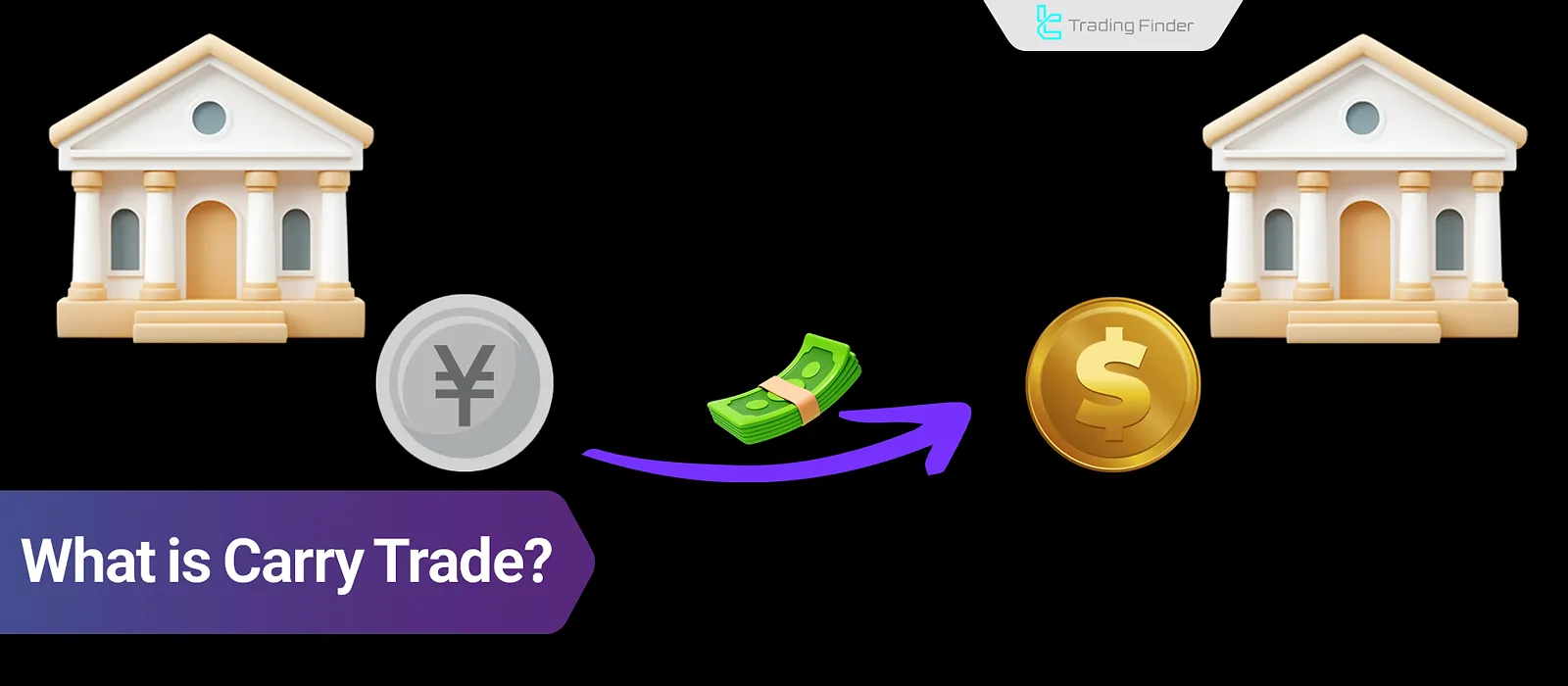
What is the Carry Trade Strategy?
Carry trade is a trading strategy based on fundamental analysis. In this strategy, traders profit from the interest rate differential between the two economies. Specifically, they borrow from an economy with a low interest rate (e.g., Japan) and invest the funds in an economy with a higher interest rate.
By doing so, the interest on the borrowed funds from Japan is easily covered by the yield from the invested bonds, allowing the trader to earn a profit.
Advantages and Disadvantages of the Carry Trade Strategy
One key advantage of the Carry Trade strategy is earning low-risk profits in stable market conditions (low volatility and minimal uncertainty).
Advantages | Disadvantages |
Low-risk profits from bond investments | Risk of interest rate fluctuations |
Profiting from currency appreciation | Sensitivity to market sentiment |
Factors Influencing Carry Trade
Interest rate differentials are the core of the Carry Trade strategy. Changes in interest rates and central bank monetary policies significantly impact these trades.
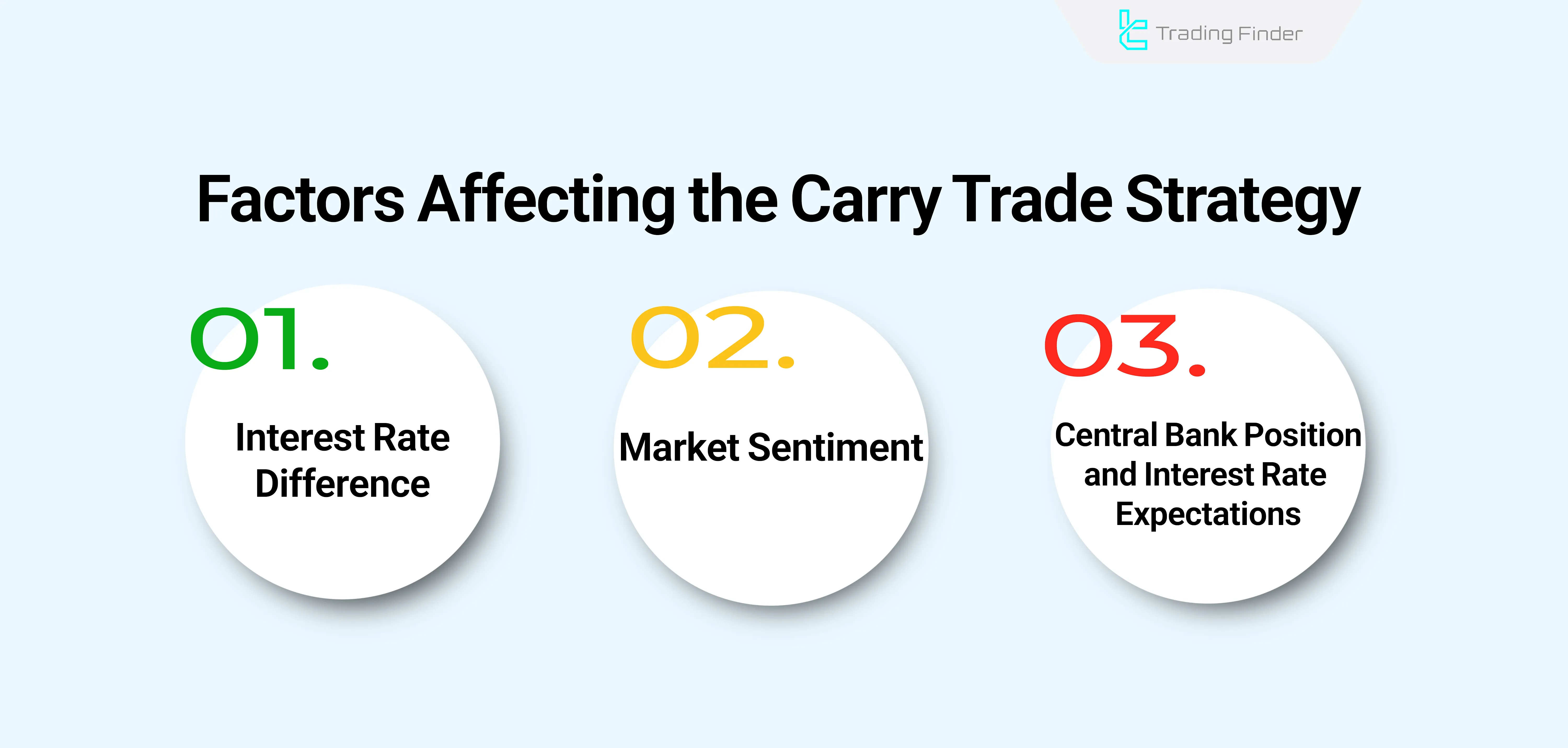
Key Factors Affecting Carry Trade:
- Interest rate differentials: The greater the differential, the higher the potential profit;
- Market sentiment: Since borrowed funds are invested in financial markets, risk aversion or risk appetite sentiment impacts carry trades;
- Monetary policy: Central banks' monetary policy stance on interest rate changes influences market sentiment and, consequently, the Carry Trade strategy.
The Impact of Market Sentiment on Carry Trade and the Japanese Yen’s Performance
Carry traders invest borrowed funds in high-yield financial markets. In other words, these trades increase during bullish markets and risk-on conditions as investors expect higher returns.
Conversely, carry traders are less motivated to borrow and invest in other markets during economic recessions and risk-off sentiment.
The Inverse Relationship Between the Yen and Global Investment Markets
Due to capital flows from carry traders, the Japanese yen often behaves differently from global markets. During global market rallies, the yen weakens because investors borrow and sell yen to buy higher-yielding, riskier assets.
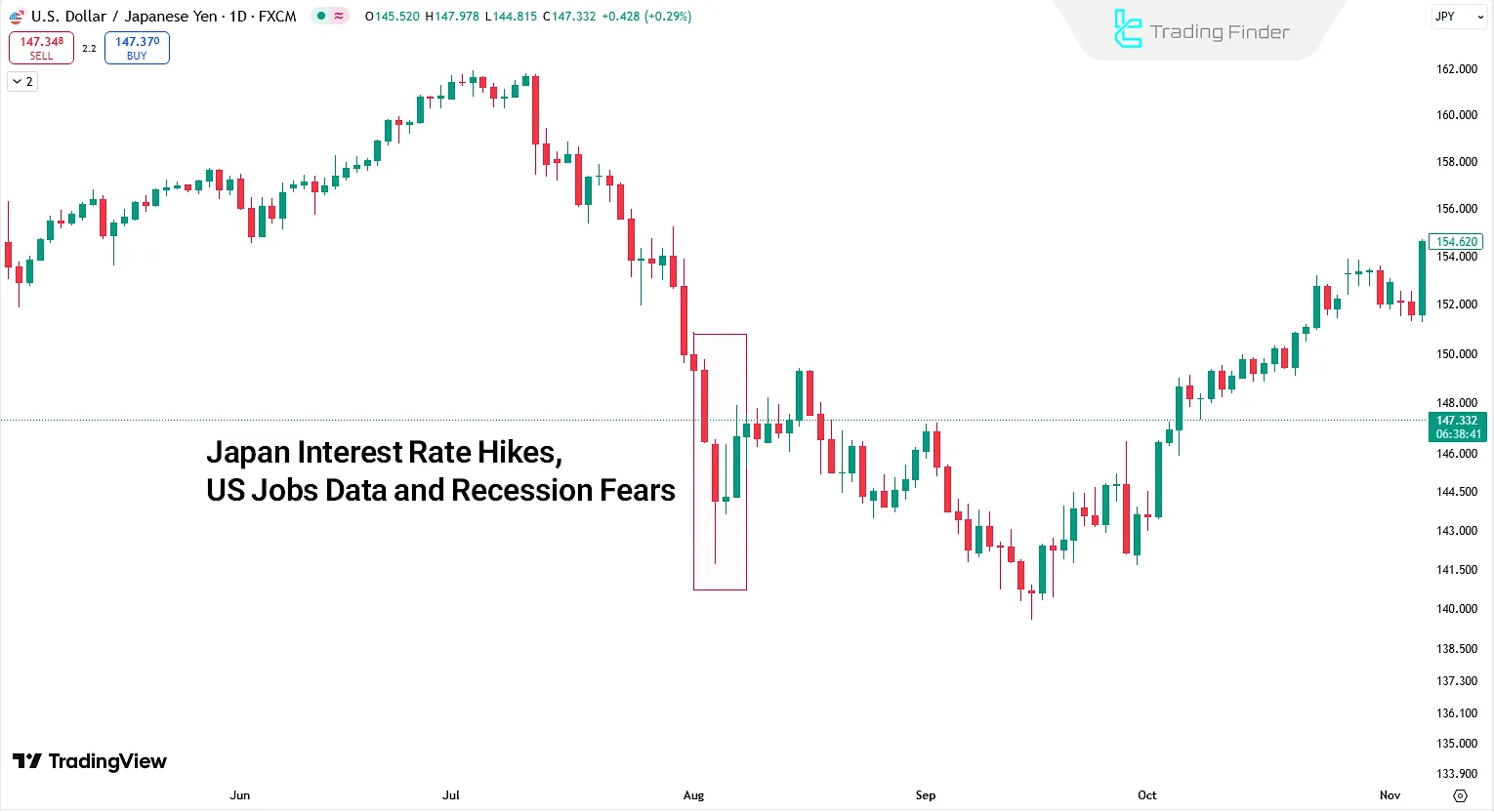
As shown in the image, on July 31, 2024, two factors—Japan’s rate hike and weak U.S. jobs data (fears of a recession)—triggered a sharp decline in global markets and a strong yen rally.
The Link Between the Japanese Yen and Carry Trade
Japan has maintained significantly lower interest rates than its peers for decades, making it an attractive funding source for carry traders.
Carry trades lead to currency depreciation because traders convert borrowed funds into the destination country’s currency for investment.
For example, if you borrow yen to invest in U.S. bonds, you must sell yen for USD, creating downward pressure on the yen.
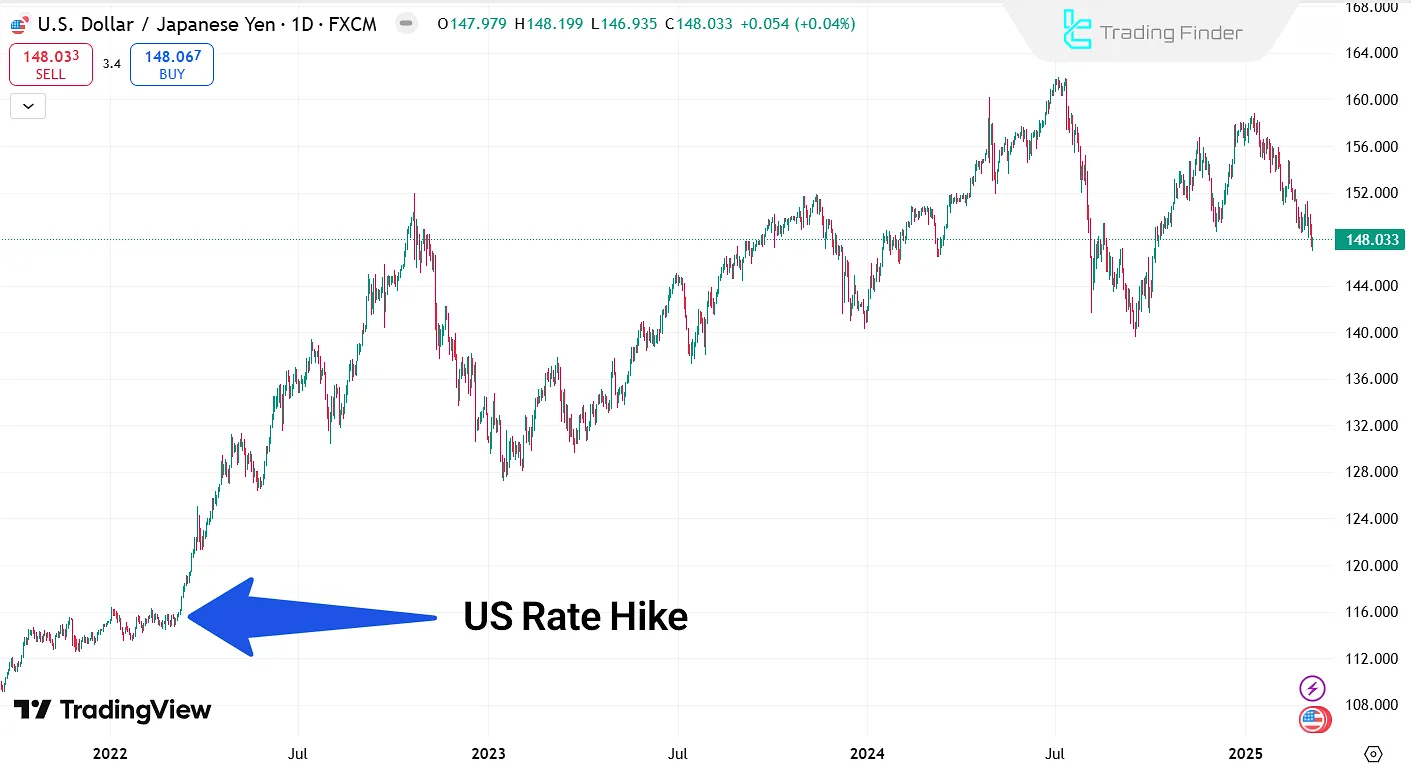
The image shows the yen’s steep decline against the USD in 2022, driven by Fed rate hikes and borrowing cost disparities between the two economies.
The Relationship Between the Yen and U.S. Bond Yields
The US10Y index (U.S. 10-year bond yields) correlates with the USD/JPY pair. Below are the key reasons for this correlation:
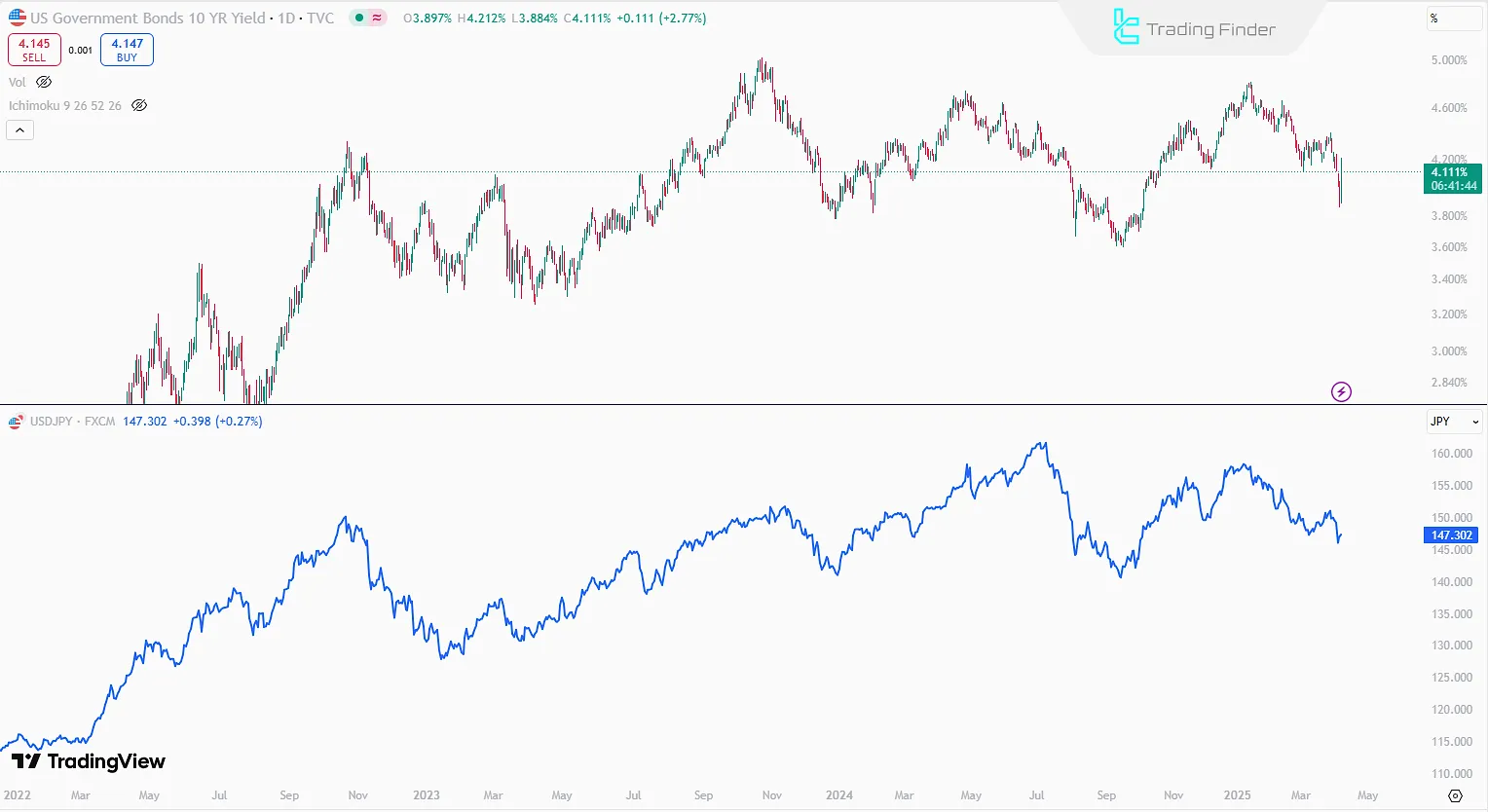
Key Reasons for the Correlation Between the Yen and U.S. Bond Yields:
- Safe-haven status:The yen and bonds are safe-haven assets in recessions, demand rises, boosting bond prices (lowering yields), and strengthening the yen (pushing USD/JPY down);
- Carry traders:Rising U.S. yields attract carry traders, leading them to selling yen. Rate hike expectations widen the yield gap, weakening the yen further.
Overall, the yen’s trend is more influenced by central bank interventions, global economic conditions, and Carry Trade activity than economic data.
Conclusion
The Carry Trade strategy capitalizes on interest rate differentials between two economies. Traders sell low-yielding currencies and invest in higher-yielding markets to profit from the spread.
Monitoring carry trade capital flows is crucial for analyzing the forex market, especially the yen. Market sentiment and global economic trends also significantly impact carry trade activity.





